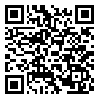Volume 6, Issue 1 (Continuously Updated 2023)
Func Disabil J 2023, 6(1): 0-0 |
Back to browse issues page
Download citation:
BibTeX | RIS | EndNote | Medlars | ProCite | Reference Manager | RefWorks
Send citation to:



BibTeX | RIS | EndNote | Medlars | ProCite | Reference Manager | RefWorks
Send citation to:
Jiryaei Z. Designing, Manufacturing, and Checking the Accuracy of an Audio Biofeedback Device for Controlling the Angle of the Wrist in Stroke People: A Pilot Study. Func Disabil J 2023; 6 (1) : 226.1
URL: http://fdj.iums.ac.ir/article-1-228-en.html
URL: http://fdj.iums.ac.ir/article-1-228-en.html
Student Research Committee, School of Rehabilitation, Iran University of Medical Science, Tehran, Iran. , Jiryaei.Z@gmail.com
Abstract: (732 Views)
Background and Objectives: Providing home-based telerehabilitation services may allow higher-dose interventions targeted to people with stroke. This study aims to design and test the feasibility of the audio biofeedback device in telerehabilitation with therapeutic exercise.
Methods: The device included an audio biofeedback box, two connecting wires, and a joint strap. The performance of the device was evaluated on 28 healthy people. We tested three angles of 0°, 30° extension, and 30° flexion. Participants move their wrists to selected angles and keep them whenever the device is warned. The response time of the device was measured with a stopwatch after the wrist reached the correct angles. Users’ satisfaction was evaluated with a satisfaction questionnaire with a Likert scale.
Results: The results showed that the device can respond at a 0°angle for all participants. Only in the two participants in the 30° extension angle, and the two participants in the 30° flexion degree, the response of the instrument in the angle is not shown. Friedman’s statistical test showed no significant difference between the three tests for each wrist angle (P<0.05). The device can give feedback in less than 150 miles per second. The participants considered a score higher than the desired threshold (2.5) for each question.
Conclusion: The efficiency of the auditory biofeedback device was confirmed at the evaluated angles, and then it can give feedback at an appropriate time. Audio biofeedback devices can be beneficial in telerehabilitation for patients with wrist disorders.
Methods: The device included an audio biofeedback box, two connecting wires, and a joint strap. The performance of the device was evaluated on 28 healthy people. We tested three angles of 0°, 30° extension, and 30° flexion. Participants move their wrists to selected angles and keep them whenever the device is warned. The response time of the device was measured with a stopwatch after the wrist reached the correct angles. Users’ satisfaction was evaluated with a satisfaction questionnaire with a Likert scale.
Results: The results showed that the device can respond at a 0°angle for all participants. Only in the two participants in the 30° extension angle, and the two participants in the 30° flexion degree, the response of the instrument in the angle is not shown. Friedman’s statistical test showed no significant difference between the three tests for each wrist angle (P<0.05). The device can give feedback in less than 150 miles per second. The participants considered a score higher than the desired threshold (2.5) for each question.
Conclusion: The efficiency of the auditory biofeedback device was confirmed at the evaluated angles, and then it can give feedback at an appropriate time. Audio biofeedback devices can be beneficial in telerehabilitation for patients with wrist disorders.
Article number: 226.1
Type of Study: Research |
Subject:
Physiotherapy
Received: 2023/08/5 | Accepted: 2023/09/4 | Published: 2023/02/12
Received: 2023/08/5 | Accepted: 2023/09/4 | Published: 2023/02/12







